Wake-robin, Trillium
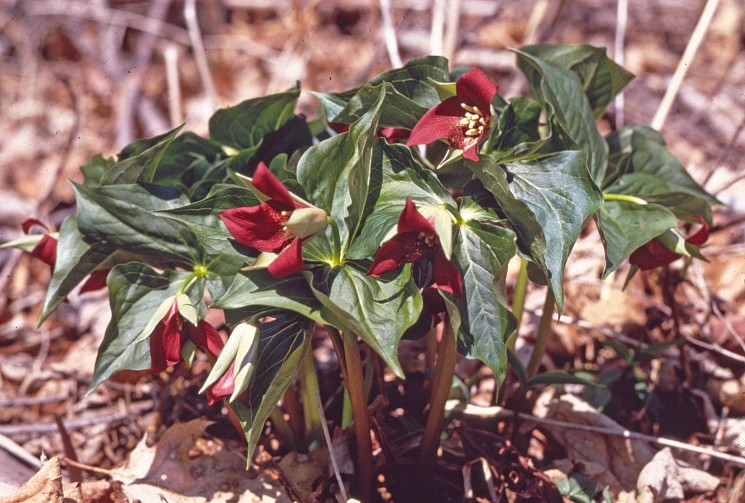
…Let us forget the sorrows: they are there always, but Spring too seldom there;
Vita Sackville-West
Once in a life-time only; oh seize hold!
Sweet in the telling once, but not re-told.
In Nature’s cycle blessed once a year,
not long enough to savour, but more dear for all the anguish of its brevity…
Any hypothetical definition of spring is subject to countless interpretations, frequently entwined with preferred blossoms. Locally, for some it may be magnolias on Commonwealth Avenue, cherries, serviceberries, dogwoods, redbuds, and/or crabapples at Mount Auburn. But for John Burroughs (1837-1921), American naturalist, he famously put it in print as the Trillium erectum, Wake-robin, red trillium, stinking Benjamin. His half-century literary conservationist career commenced in 1871 with Wake-Robin. His own page one therein, clearly defined spring for him, “…and when I have found the wake-robin in bloom I know the season is fairly inaugurated. With me this flower is associated, not merely with the awakening of Robin, for he has been awake for some weeks, but with the universal awakening and rehabilitation of nature.”
Usually not found by the drive-through spring adherents, these are aesthetic gifts to woodland path aficionados who may perchance be satisfied by a memorable encounter of even a single plant in blossom. Native to the eastern United States and Canada its purple/maroon flowers have three lance-shaped, prominently veined, petals. These perennial flowers are on a short stem (pedicel) above a whorl of three attractive, ovate, green leaves. These nectar-less flowers emit an odor which attracts flies and beetles as pollinators. The variant degrees of fetidness clearly are the source of the less complimentary colloquial name,stinking Benjamin. This allows use here of Alfred, Lord Tennyson’s (1809-1892) quatrain;
What is it? A learned man
Could give it a clumsy name,
Let him name it who can,
The beauty would be the same.
The genus Trillium comprises almost fifty species, primarily native to North America, but with ten species native to Asia. One distinct characteristic of this genus is myrmecochory, the dispersal of seeds by ants. The etymology is from the Greek for ant (myrmex) and dispersal (kore). When Trillium flowers have been successfully fertilized they will eventually produce a 1-inch to 1 1/2-inch, red, fruit capsule within which are numerous1/8-inch seeds. Attached to these seeds are elaiosomes, an appendage rich in nutrients, lipids and/or oleic acids. Ants take these seeds back to their nests to eat or feed their larvae the elaiosomes. The seeds then are discarded, outside or inside of the ant nest. This insect-plant interaction is not unique to trilliums, over 11,000 species of plants benefit from myrmecochory.
Other trillium species to look for include Trillium grandiflorum, big white trillium, which as the name suggests have three white petals. Also, the Trillium undulatum, painted trillium, which have white petals with a distinct red v-shaped marking near the base of each petal. On a future visit to Mount Auburn, look for trilliums at Dell Path, Sumac Path, Buttercup Path, and at Spruce Knoll.
…I have touched the trillium,
Helen Dudley
Pale flower of the land,
Coral, anemone,
And not your hand…
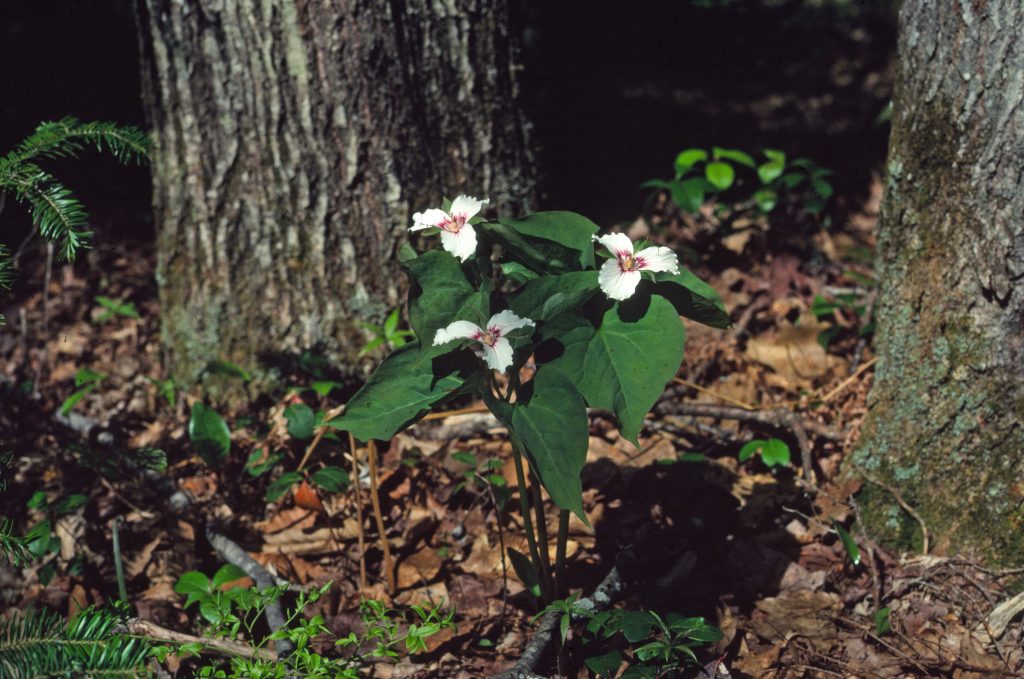
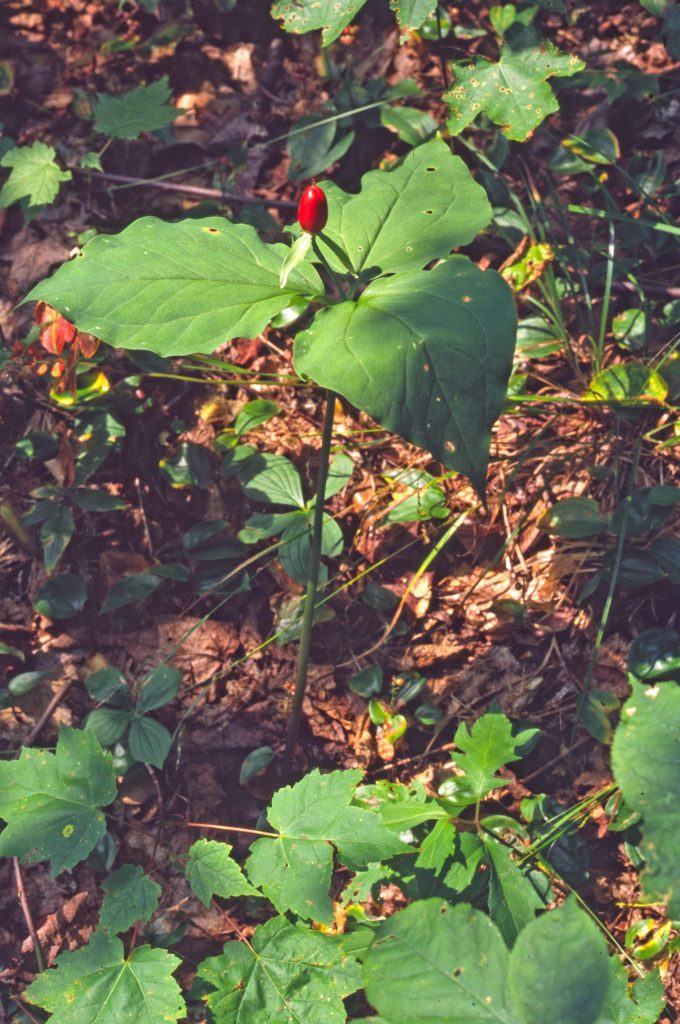
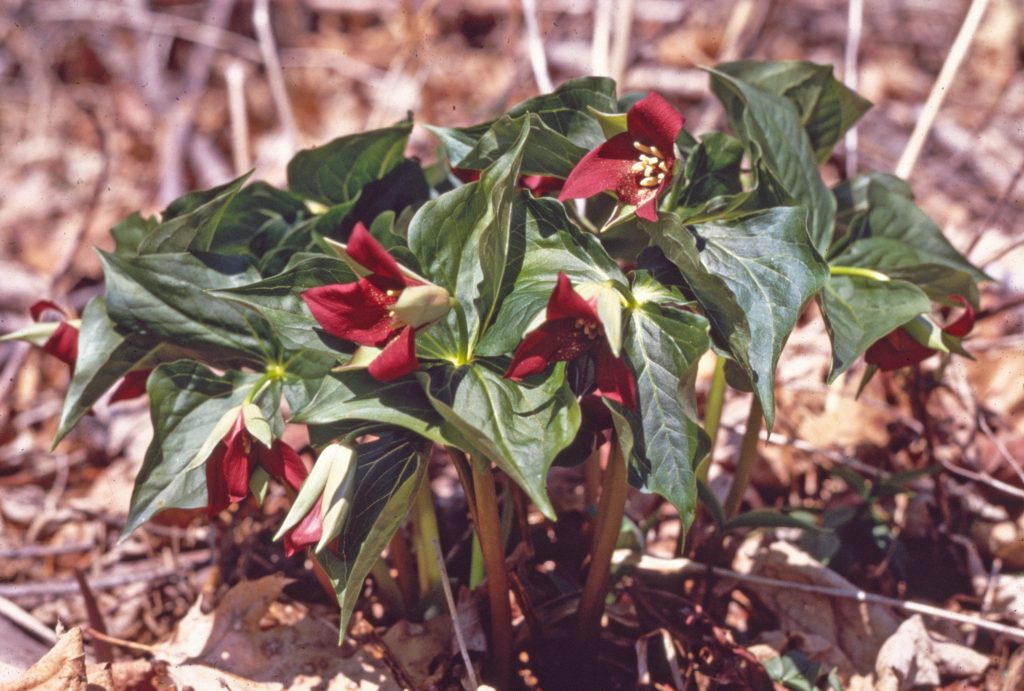
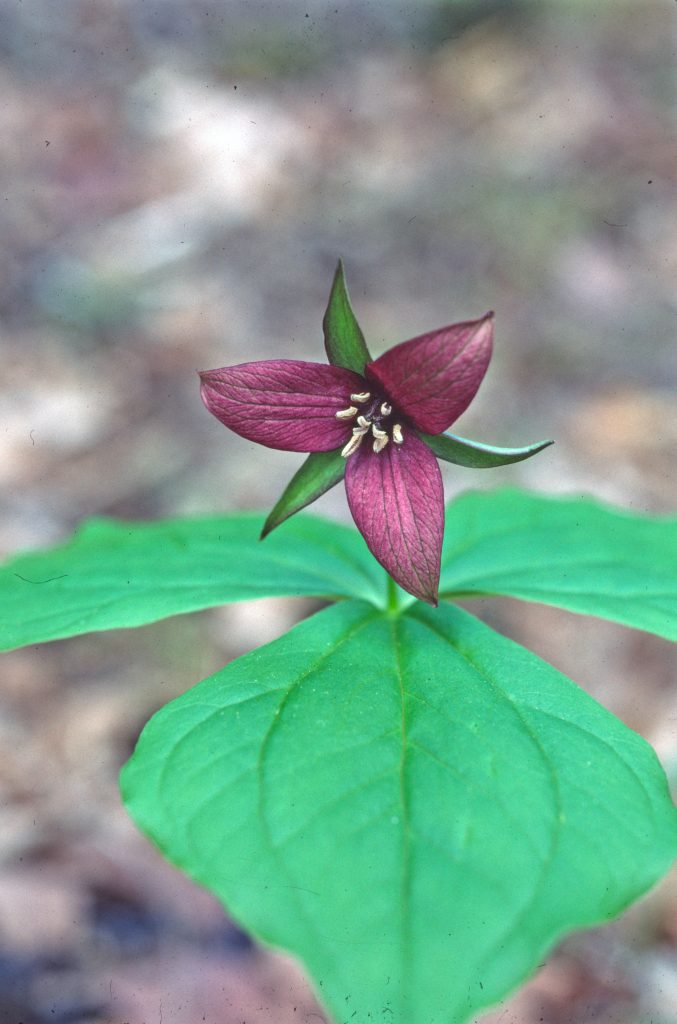
Leave a Reply